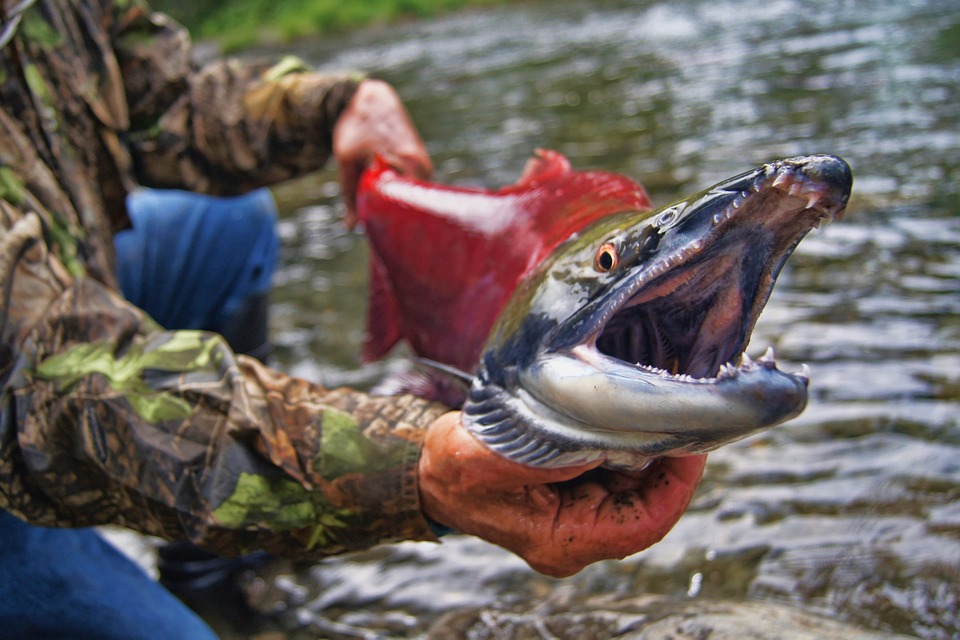
Hansen Creek, a small stream in southwest Alaska, is hard to pick out on a map. It’s just over a mile long and about 4 inches deep. Crossing from one bank to the other takes about five big steps.
For the past 20 years, dozens of University of Washington researchers have walked this creek every day during spawning season, counting live salmon and recording information about the fish that died—for a salmon, death is inevitable here, either after spawning or in the paws of a brown bear. After counting a dead fish, researchers throw it on shore to remove the carcass and not double-count it the next day. The data collection is part of a long-term study looking at how bear predation affects sockeye salmon in this region.
Twenty years later, researchers have found that two decades of carcasses tossed to the left side of Hansen Creek had a noticeable effect: White spruce trees on that side of the stream grew faster than their counterparts on the other side. What’s more, nitrogen derived from salmon was found in high concentration in the needles of the spruce trees on the side of the tossed carcasses.
LINK (via: Phys.Org)





